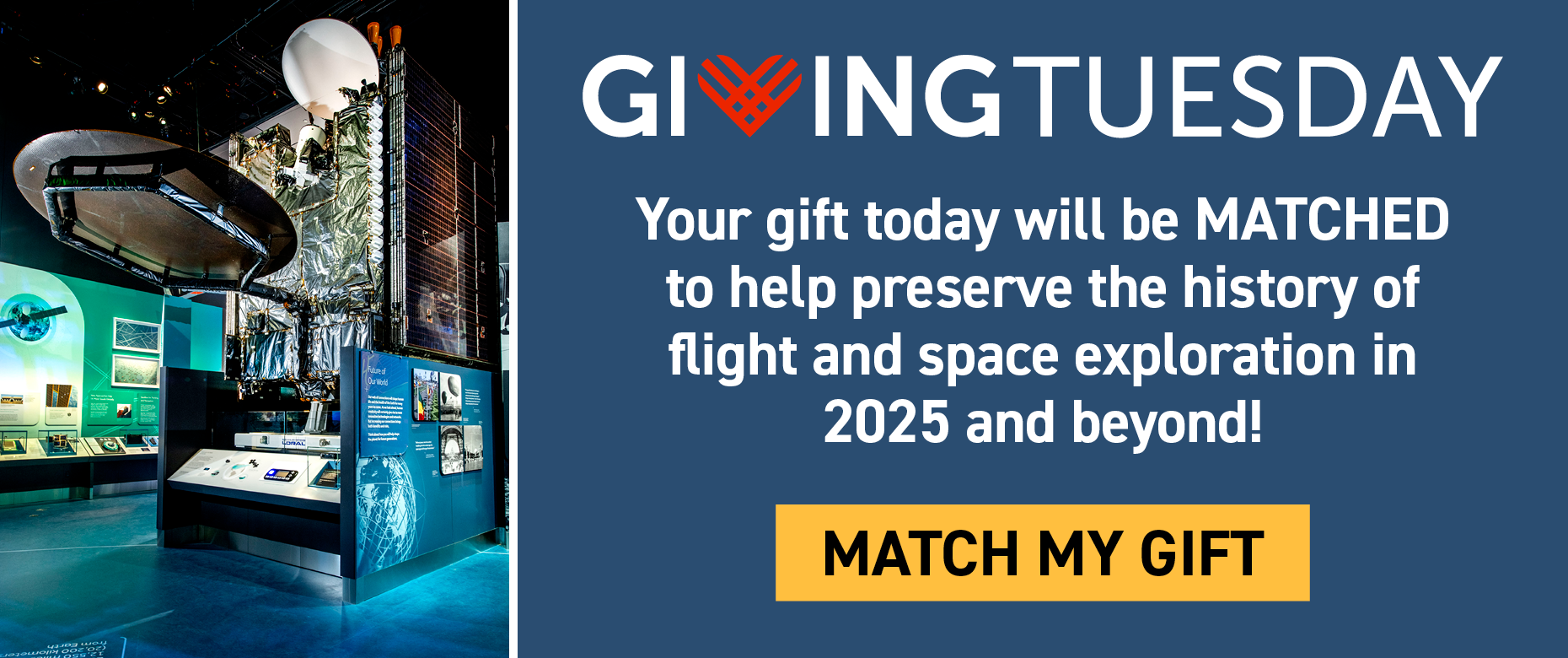All Stories
Showing 531 - 540 of 627
Director of the Jet Propulsion Laboratory (JPL) from 1976 to 1982, Bruce Murray was a geologist whose vision was never earthbound. He earned his PhD from MIT and served two years in the U.S. Air Force before joining the California Institute of Technology (Caltech) in 1960. Caltech manages JPL for NASA, and soon Murray was working on JPL’s Mariner missions to Mars. During his tenure as director of JPL, the Viking spacecraft landed on Mars and the Voyagers began exploring the outer solar system. He also oversaw Earth orbital missions, including Seasat, the Solar Mesosphere Explorer, and Shuttle Imaging Radar-A.
As you turn to leave, you suddenly stop, frozen in wonder, beholding an oasis so calm and cool and quiet that your airplane-addled, spaced-out brain can hardly believe it isn’t a mirage. It’s not. On your floor plan it’s labeled Flight and the Arts. And much to their loss and to your relief, most visitors overlook it.
Widely known as a test pilot extraordinaire, C. Gordon Fullerton fulfilled three distinguished careers centered on aeronautics and spaceflight. He spent 30 years in the U.S. Air Force (1958–1988), retiring with the rank of colonel after serving as a bomber pilot, fighter pilot, and test pilot. During 20 of those years, he was an astronaut in the Apollo, Skylab, and Space Shuttle programs (1966–1986). Then, for more than 20 years, he was a flight research pilot and chief pilot at the NASA Dryden Flight Research Center (1986–2007).
The Viking program represents a major effort by the United States to explore Mars, with the particular goal of performing experiments on Martian soil to look for possible evidence of life. Four individual spacecraft were sent to Mars as part of the Viking project, two orbiters and two landers, launched as identical orbiter/lander pairs.
It was about five years ago that Museum specialist Amanda Young announced that she had found a publisher, Powerhouse, for her book on the Museum's collection of spacesuits. The book features the photographs of Mark Avino and the x-rays of many of the spacesuits in the collection that he and Roland Cunningham had created and assembled. The book represented an overview of Amanda’s work on the largest collection of spacesuits in the world.
Modern launch vehicles, including the recently retired space shuttle and the earlier Saturn V that took the first humans to the Moon, are among the most complex feats of engineering in human history. In the case of the Saturn V, the vehicle was longer than a football field and comprised of some 5,600,000 separate parts, all of which had to work perfectly to enable the rocket to carry out its mission.
Sally Ride became the first American woman in space in June 1983. Ride’s presence on Space Shuttle Challenger was a ride into history, for it broke the gender barrier in the United States human spaceflight program.
How do you bring together two orbiting astronauts and more than 12,000 students scattered around the U.S. and Canada? It’s not rocket science, but it's close. First you have to find some very dedicated partners with a common purpose, like the Smithsonian National Air and Space Museum, the National Aeronautics and Space Administration, the U.S. Department of Education, and the National Center for Earth and Space Science Education. Second you have to ensure an audience; which isn’t very difficult because who wouldn’t jump at the chance to talk to astronauts while in space? Third, and most challenging, you have to put together the technology capable of linking 24 sites scattered around North America and Hawaii with something moving at 28,163 kph (17,500 mph) 354 km (220 miles) above the Earth’s surface.
Check out this fun Peeps diorama depicting the celebration of Space Shuttle Discovery's arrival at our Udvar-Hazy Center on April 19, 2012.
Visitors to the National Air and Space Museum don’t often get to see the work that goes on behind the scenes. This is especially true in terms of the labor that goes into collecting and caring for our artifacts. Many may wonder where all the air and space stuff (we call them artifacts) comes from. The answer is from a variety of places, including the United States Air Force, NASA, and the general public. These artifacts vary; some are large (aircraft and spacecraft) but many are relatively small (aircraft equipment or military or commercial airline uniforms and insignia, for example, or items of popular culture—air and space toys and games).
